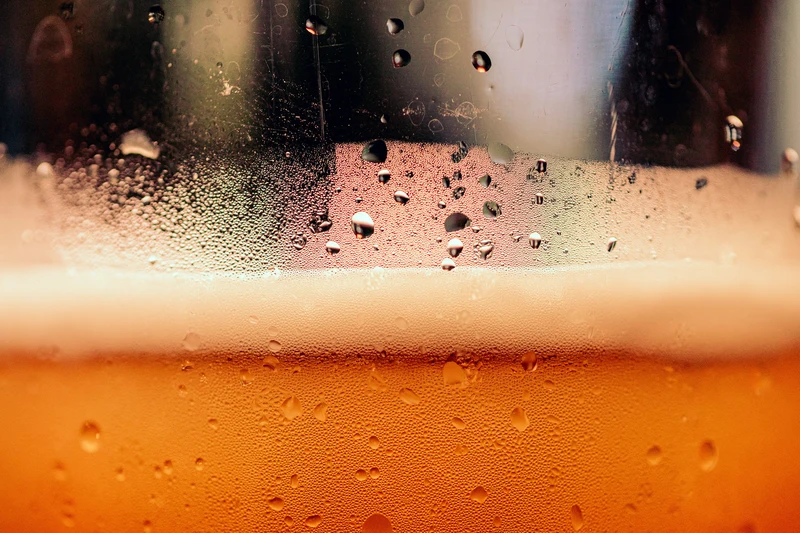The Rise of Non-Alcoholic Craft Beer: Is It Worth the Hype?
Look, I'll be honest with you. Five years ago, if someone told me I'd be writing seriously about non-alcoholic craft beer, I would have laughed them out of my local taproom. NA beer was that sad, watery stuff you'd reluctantly grab for your designated driver buddy, and even then, you'd apologize for it. But here we are in 2025, and I'm genuinely excited about some of the alcohol-free options hitting the market. Wild times, my friends.
The craft beer scene has always been about pushing boundaries, whether we're talking about hop-forward IPAs that'll strip the enamel off your teeth or barrel-aged stouts that cost more than a decent bottle of wine. But non-alcoholic craft beer might be the most surprising trend yet. We've gone from viewing NA beer as an oxymoron to having dedicated breweries like Athletic Brewing Company raising millions in funding and traditional craft heroes like Dogfish Head jumping into the game.
What's Driving This Crazy Growth?
The numbers are pretty impressive, honestly. NA beer sales have been climbing by double digits every year since 2018, and craft NA is leading the charge. But why? Well, it turns out people are getting more health-conscious without wanting to give up the good stuff entirely. Makes sense, right?
I've noticed this shift in my own circle. Friends who used to pound IPAs every weekend are now alternating with NA options during the week. They want to stay part of the beer conversation, hit up brewery tours, and enjoy complex flavors without feeling like garbage the next morning or adding extra pounds around the midsection. Can't blame them for that.
The whole "sober curious" movement has played a huge role too. Dry January used to be something only your most health-obsessed friends attempted, but now it's mainstream. People want options that let them participate in beer culture without the alcohol. They still want to grab a cold one after work or have something interesting at social gatherings, just without the buzz.
And let's be real, younger drinkers are approaching alcohol differently than previous generations. They're more aware of health impacts and more willing to moderate their consumption. NA craft beer gives them a way to stay engaged with craft beer culture without the commitment that comes with regular alcohol consumption.
The Brewing Revolution Behind NA Beer
Here's where things get really interesting from a brewing perspective. Early non-alcoholic beers were basically afterthoughts, thin and flavorless because breweries would just remove alcohol from regular beer and call it a day. The results were about as appealing as you'd expect.
Modern craft NA brewers have completely flipped the script. They're using specialized yeasts that naturally produce minimal alcohol while still creating all those flavor compounds that make beer taste like beer. Some are employing vacuum distillation at low temperatures, which sounds fancy but basically means they can strip out alcohol without destroying all the delicate hop oils and malt flavors that took so much effort to develop in the first place.
The ingredient game has stepped up massively too. These aren't budget operations throwing together whatever's cheap. Craft NA brewers are using the same premium Citra, Mosaic, and Simcoe hops that cost serious money in regular IPAs. They're sourcing specialty malts and experimenting with adjuncts just like any other serious craft operation. When you're putting that level of care and expense into ingredients, you're clearly not treating this as a throwaway product.
The Taste Test: Does It Actually Deliver?
Alright, let's cut to the chase. Does this stuff actually taste good? Because at the end of the day, if it doesn't deliver on flavor, all the health benefits and good intentions in the world won't matter.
I've been pleasantly surprised by some of the top-tier options. Athletic Brewing's Run Wild IPA genuinely shocked me the first time I tried it. You get real tropical fruit hop character, actual bitterness that doesn't taste forced, and a finish that doesn't leave you wondering where the rest of the beer went. Brooklyn's Special Effects nails that crisp, clean lager profile that made their regular version a staple. Clausthaler Dry Hopped brings legitimate hop aroma and flavor without feeling like they're trying too hard to compensate for missing alcohol.
But let's keep it real here. There are still some significant limitations. Styles that rely heavily on alcohol for warmth and body can feel pretty incomplete in NA form. I've tried NA imperial stouts and barleywines that just don't work because so much of what defines those styles comes from the alcohol presence itself. Belgian ales are tough too since those complex esters that make Belgian yeast special are largely alcohol-derived.
The Mouthfeel Challenge
One thing that still trips up a lot of NA beers is mouthfeel. Alcohol adds body and texture in ways that are genuinely hard to replicate. Some brewers try to compensate with extra residual sugars or specialized proteins, but the results can feel artificial or overly sweet. The best NA beers I've had work with this constraint rather than fighting against it, focusing on styles where alcohol doesn't play the starring role in the overall experience.
Let's Talk About Price
Here's something that might surprise you: good NA craft beer often costs as much as or more than regular craft beer. Yeah, I know, it seems backward since they're not paying alcohol taxes. But the reality is that making quality NA beer requires specialized equipment, longer brewing processes, and often smaller production runs. All of that adds up.
Whether that's worth it depends on what you're looking for. If you're genuinely trying to cut back on alcohol while staying engaged with craft beer culture, the premium pricing makes sense. You're paying for the research, development, and specialized processes that make these beers possible. If you're just looking for something cheap and refreshing to drink while mowing the lawn, you might want to stick with regular beer or look at more affordable NA options.

